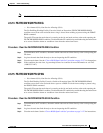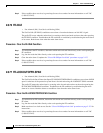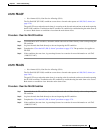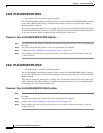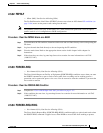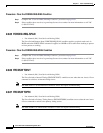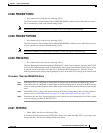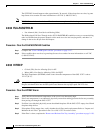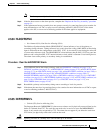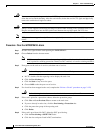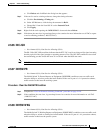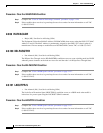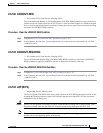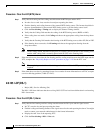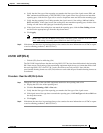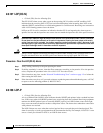
2-73
Cisco ONS 15327 Troubleshooting Guide, R3.4
March 2004
Chapter 2 Alarm Troubleshooting
Alarm Procedures
Note The fan-tray assembly should run immediately when correctly inserted.
Step 6 If the fan does not run or the alarm persists, complete the “Replace the Fan-Tray Assembly” procedure
on page 3-1.
Step 7 If the replacement fan-tray assembly does not operate correctly, log onto http://www.cisco.com/tac for
more information or call TAC to report a service-affecting problem (1-800-553-2447) if the alarm
applies to the NE, or a non-service-affecting problem if the alarm applies to equipment.
2.6.94 HLDOVRSYNC
• Not Alarmed (NA), Non-Service Affecting (NSA)
The Holdover Synchronization Mode (HLDOVRSYNC) alarm indicates a loss of the primary or
secondary timing reference. Timing reference loss occurs when line coding (AMI, B8ZS) on the timing
input is different from the configuration on the ONS 15327. It also usually occurs during the selection
of a new node reference clock. The HLDOVRSYNC alarm indicates that the ONS 15327 has gone into
holdover and is using the ONS 15327 internal reference clock, which is a Stratum 3-level timing device.
The alarm clears when primary or secondary timing is reestablished.
Procedure: Clear the HLDOVRSYNC Alarm
Step 1 Clear additional alarms that relate to timing, such as a FRNGSYNC condition (see page 2-71); a
FSTSYNC condition (see page 2-71); a HLDOVRSYNC alarm (see page 2-73); an LOF (BITS) alarm
(see page 2-77); an LOS (BITS) alarm (see page 2-81); a MANSWTOINT condition (see page 2-89); a
MANSWTOPRI condition (see page 2-89); a MANSWTOSEC condition (see page 2-89); a
MANSWTOTHIRD condition (see page 2-89); a SWTOPRI condition (see page 2-115); a SWTOSEC
condition (see page 2-115); a SWTOTHIRD condition (see page 2-115); a SYNC-FREQ condition (see
page 2-116); a SYNCPRI alarm (see page 2-117); a SYNCSEC alarm (see page 2-117); or a
SYNCTHIRD alarm (see page 2-118).
Step 2 Reestablish a primary and secondary timing source according to local site practice.
Step 3 If the alarm does not clear, log onto http://www.cisco.com/tac for more information or call TAC to report
a service-affecting problem (1-800-553-2447).
2.6.95 IMPROPRMVL
• Critical (CR), Service Affecting (SA)
The Improper Removal (IMPROPRMVL) alarm occurs when a card is physically removed from its slot
before it is deleted from CTC. The card does not need to be in service to cause the IMPROPRMVL
alarm; it only needs to be recognized by CTC. The alarm does not appear if you delete the card from
CTC before you physically remove the card from the node.
Caution Updating software on a standby XCT card can take up to 30 minutes.



